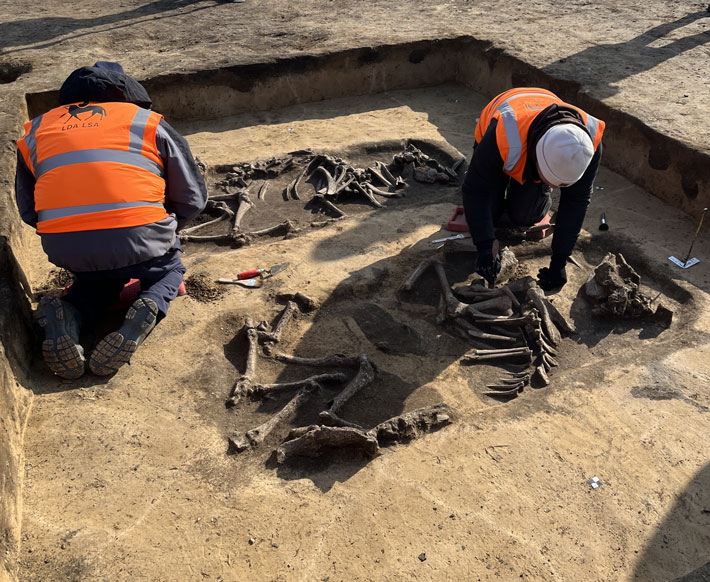 MAGDEBURG, GERMANY—According to a press release from the State Office for Heritage Management and Archaeology Saxony-Anhalt, archaeologists conducting excavations on and around a small hill in eastern Germany known as the Eulenberg have discovered a burial complex that Neolithic people used for generations. They found that between 4100 and 3600 B.C., when people belonging to what scholars call the Baalberg Culture lived in the area, two large wooden burial chambers measuring 65 and 100 feet long were constructed within 700 feet of each other. Some 1,000 years later, members of the Globular Amphora Culture (3300–2800 B.C.) constructed a processional route that connected the two tombs, alongside which they buried pairs of young cattle. Later, people dug a palisaded ditch along the processional route and seem to have deliberately avoided destroying the cattle burials. Nearby burial mounds dating to the period of the Corded Ware Culture (2800–2050 B.C.) suggest the landscape was considered important for at least 2,000 years. To read more about the people living in Germany during this period, go to “The Neolithic Toolkit.”
MAGDEBURG, GERMANY—According to a press release from the State Office for Heritage Management and Archaeology Saxony-Anhalt, archaeologists conducting excavations on and around a small hill in eastern Germany known as the Eulenberg have discovered a burial complex that Neolithic people used for generations. They found that between 4100 and 3600 B.C., when people belonging to what scholars call the Baalberg Culture lived in the area, two large wooden burial chambers measuring 65 and 100 feet long were constructed within 700 feet of each other. Some 1,000 years later, members of the Globular Amphora Culture (3300–2800 B.C.) constructed a processional route that connected the two tombs, alongside which they buried pairs of young cattle. Later, people dug a palisaded ditch along the processional route and seem to have deliberately avoided destroying the cattle burials. Nearby burial mounds dating to the period of the Corded Ware Culture (2800–2050 B.C.) suggest the landscape was considered important for at least 2,000 years. To read more about the people living in Germany during this period, go to “The Neolithic Toolkit.”
Neolithic Burial Complex Excavated in Germany
